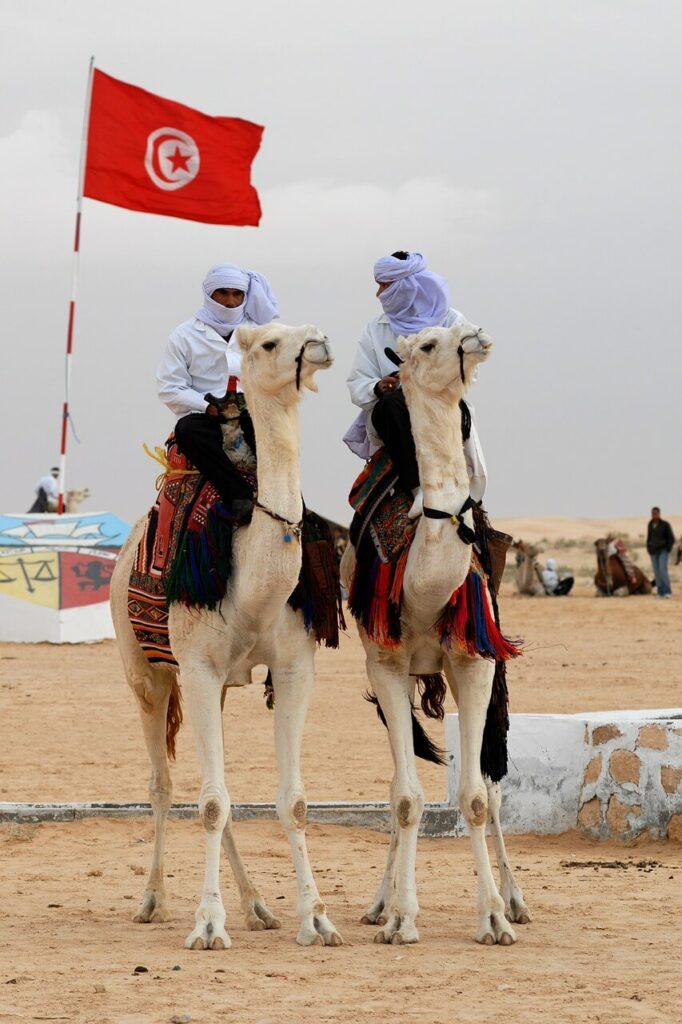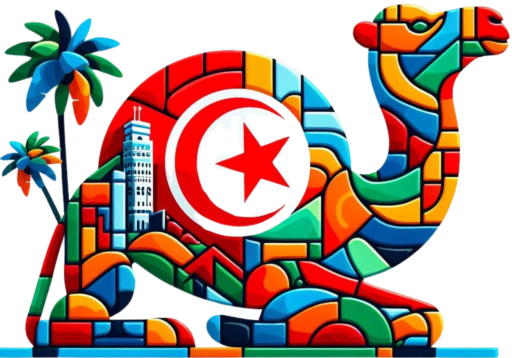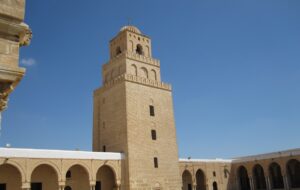Table of Contents:
- History of the Tunisian Flag
- Meaning of the Tunisian Flag
- Facts About the Tunisian Flag
- The Tunisian Flag in the Modern Context
- Conclusion: The Value of the Tunisian Flag Today
History of the Tunisian Flag
The history of the Tunisian flag dates back to the 19th century, when it was first introduced in 1827 by the Bey of Tunis, Hussein II. This flag, with its red background and the crescent and star inside a white circle, is a distinctive mark of Tunisia’s Ottoman past. During the Ottoman rule, this symbol represented both the connection to Islamic culture and the influence of Turkish tradition, but the Tunisian design retained unique characteristics.
Despite Tunisia being under French control during the colonial period, the flag was used as a symbol of resistance and national identity, representing hope and the desire for independence. After liberation from France in 1956, the flag was officially adopted as the country’s symbol, with a few modifications that refined its design and colors.
The flag has withstood various political changes, preserving its symbolic value for the Tunisian people. Over time, it has become an emblem of freedom, unity, and independence, and is regarded as one of the most beloved and respected national symbols.
Meaning of the Tunisian Flag
The design of the Tunisian flag is rich in symbolic meanings. The red color represents the blood shed by martyrs for the country’s freedom and independence. It symbolizes the historical value of the battles fought by the people to defend their land from foreign invasion.
The crescent and the five-pointed star, iconic symbols of Islam, represent the predominant Muslim faith in Tunisia. The crescent symbolizes unity and strength in the Islamic world, while the five-pointed star represents the five pillars of Islam, which form the foundation of the Muslim religion.
The white circle surrounding the crescent and star symbolizes peace and the hope for a prosperous future. Together, these elements reflect the country’s historical heritage and the religious and cultural values shared by Tunisians.
Facts About the Tunisian Flag
The Tunisian flag has many interesting aspects, some of which stem from its similarity to the Turkish flag, due to Ottoman influence. Although the designs are similar, the Tunisian flag has distinctive characteristics and its own specific identity.
- Similarity with the Turkish Flag: The Tunisian flag resembles the Turkish flag due to the crescent and star, but the meaning and origin of these elements differ according to the country’s culture and history.
- The Five-Pointed Star: The star represents the five pillars of Islam and the importance of religion in everyday Tunisian life, distinguishing Tunisian symbolism from that of other Muslim nations.
- Flag Regulations: Tunisia has specific regulations on the use of its flag, which is treated with the utmost respect at official ceremonies and national events. Improper use is strictly punished by law.
The Tunisian Flag in the Modern Context
In the modern context, the Tunisian flag continues to be a symbol of unity and national pride. It is displayed during national events, celebrations, and international sports events as an emblem of national identity and collective pride.
During the Jasmine Revolution, which led to the fall of Ben Ali’s regime and the beginning of Tunisia’s democratic process, the flag took on a new significance, representing the fight for freedom and change. Many protesters waved it during the demonstrations, and since then, it has been associated with hope and renewal.
Today, the flag continues to represent the country in international contexts, a recognizable symbol worldwide and a source of pride for Tunisians, especially during sports competitions in which it represents Tunisia.
Conclusion: The Value of the Tunisian Flag Today
The Tunisian flag is more than a mere visual symbol. It is an emblem of Tunisia’s history, culture, and identity. From its origins under Ottoman influence to its independence from France and the recent revolution, the flag has always represented the values of freedom and unity of the Tunisian people.
Understanding the history and meaning of the Tunisian flag helps in appreciating the cultural heritage of the country and the profound meaning this symbol holds for Tunisians.
If you want to discover more about Tunisian culture, visit our Tunisia blog.
To read more of our articles, click here.
To listen to Tunisia’s national anthem, click here.






